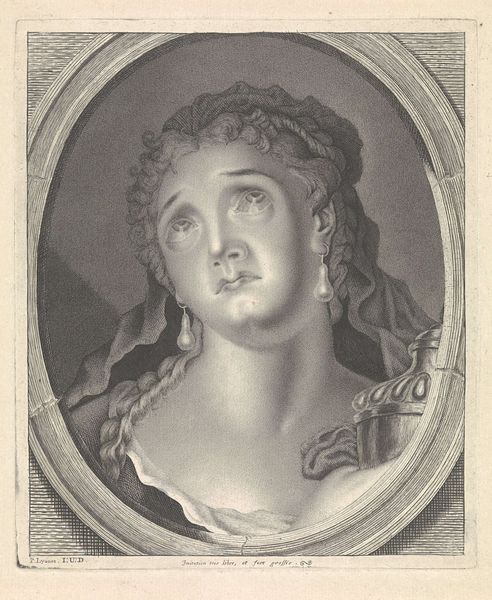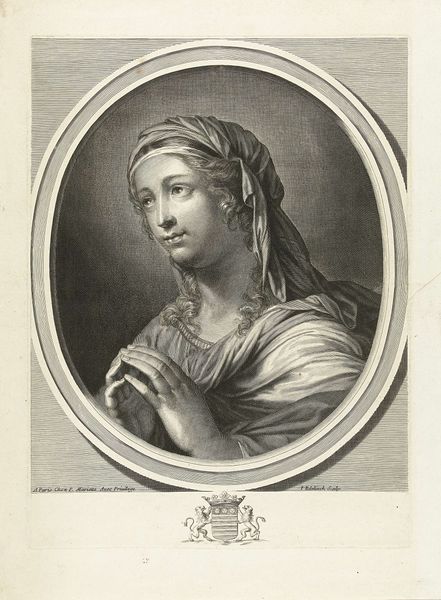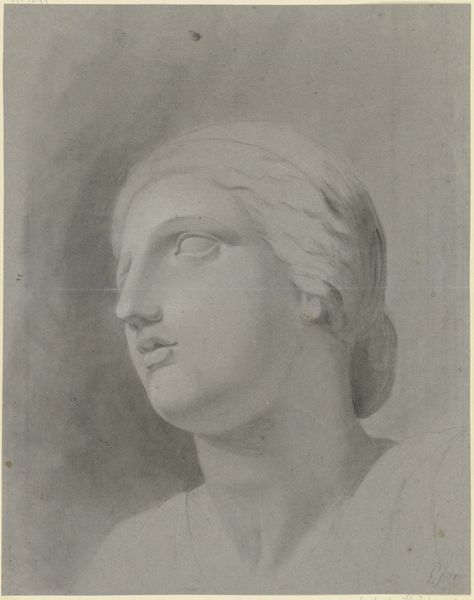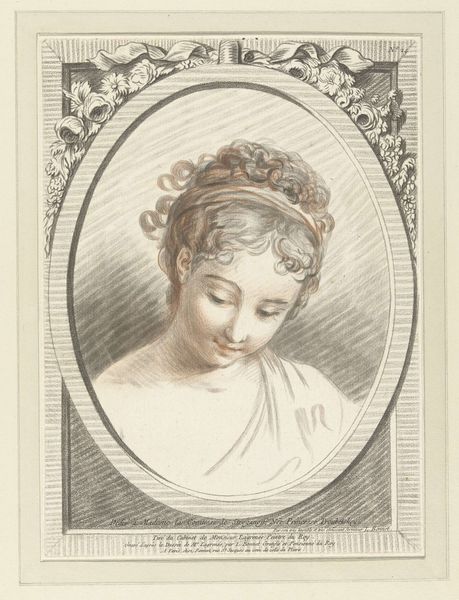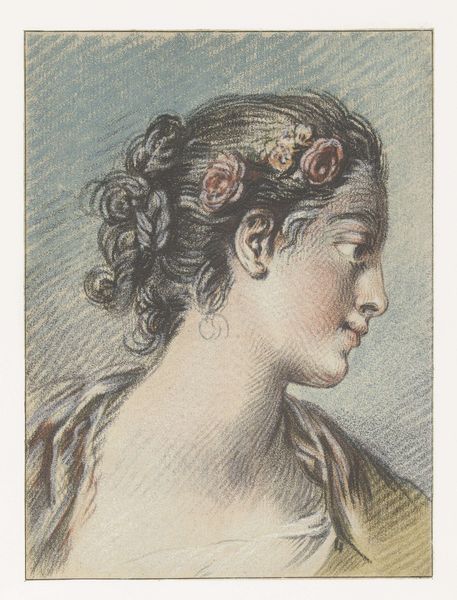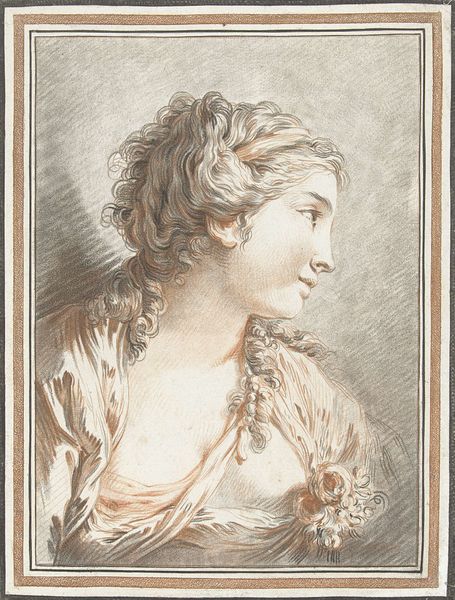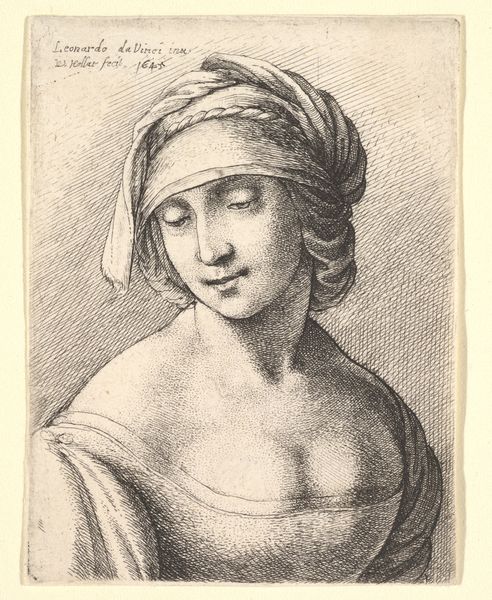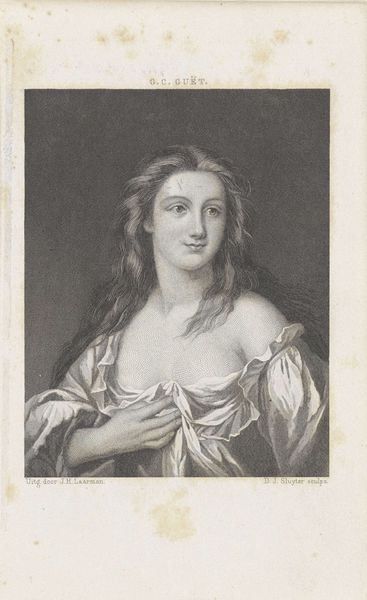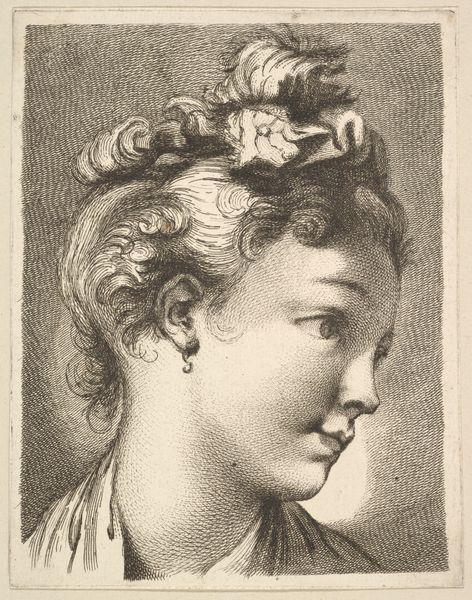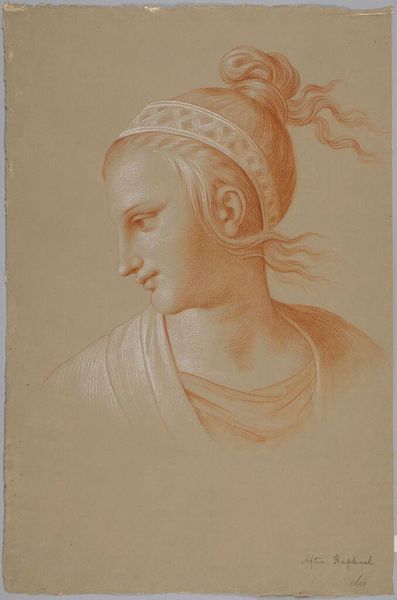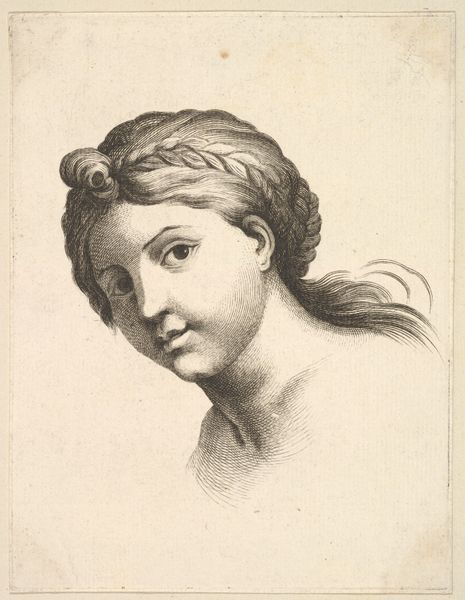
Dimensions: height 412 mm, width 302 mm
Copyright: Rijks Museum: Open Domain
Curator: Immediately, I'm struck by the serenity of this portrait. There's a certain... knowingness in her gaze. It feels almost dreamlike. Editor: Here we have Jean François Janinet’s “Head of a Young Woman”, estimated to have been created sometime between 1762 and 1814. It’s currently held in the Rijksmuseum collection, a captivating pastel print on paper. What draws your eye, material-wise? Curator: It's interesting how the pastels create such a soft, almost ethereal effect. Given the printmaking process, I wonder about the distribution and consumption of such images. Was it aiming for wider circulation of idealized beauty, or something else entirely? And consider paper—its availability, its cost at the time—influencing accessibility to the artwork. Editor: You've immediately leapt to the social life of the image, the materiality framing its access! For me, the almost monochrome palette focuses the attention entirely on the delicate gradations of light and shadow across her face. It reminds me of gazing at twilight... a kind of quiet intensity. Curator: It's a beautiful sentiment. But to go back to your word, 'delicate,' that itself suggests the level of labor and skill involved. Consider the specific techniques employed in printmaking to reproduce that delicacy, and how those methods shaped the artistic process and the image we now see. Editor: Absolutely. And to my mind, Janinet absolutely mastered a technique of rendering emotion with mere tones of blues and pinks! Tell me more... what else about the artistic conventions of portraiture at the time strikes you when viewing this work? Curator: We are dealing with the height of Romanticism, so think about class and representation; prints like this were produced to cultivate an image of idealized femininity within the framework of social hierarchies and the commercialization of art. So there are economic power structures inherent in what might strike you as an aesthetically 'pretty' image. Editor: Ah, always bringing us back to earth. And rightly so. It's good to be reminded that even the most delicate artworks can carry weighty stories about their time. And yet, still… I keep being drawn back to the singular focus on the woman's face, her captivating expression... I am unable to turn away! Curator: Precisely. It’s that interplay, the tension between beauty and the socio-economic factors, that makes the work so compelling. We can never simply divorce aesthetics from the material conditions that brought an image into existence.
Comments
No comments
Be the first to comment and join the conversation on the ultimate creative platform.
